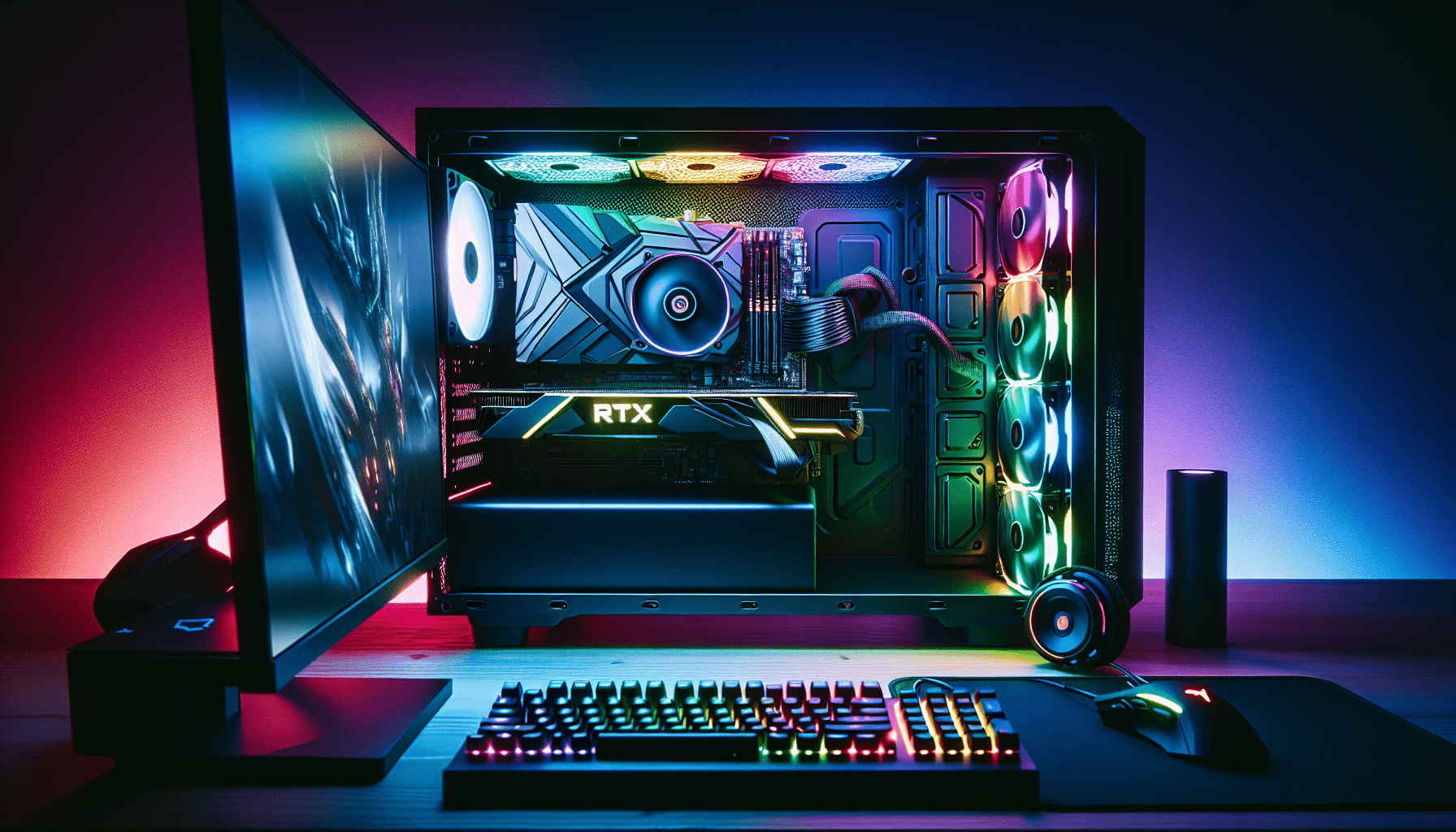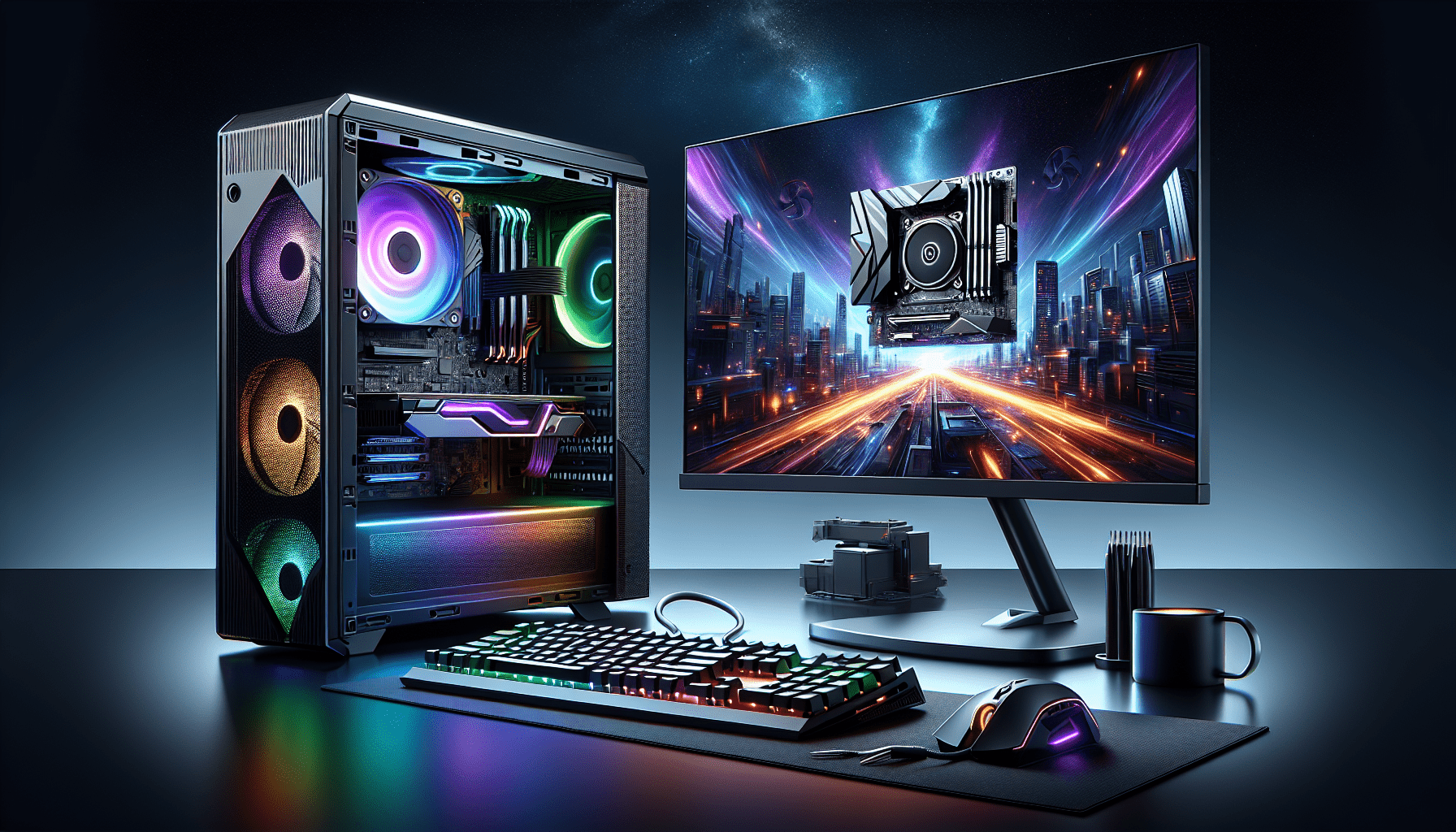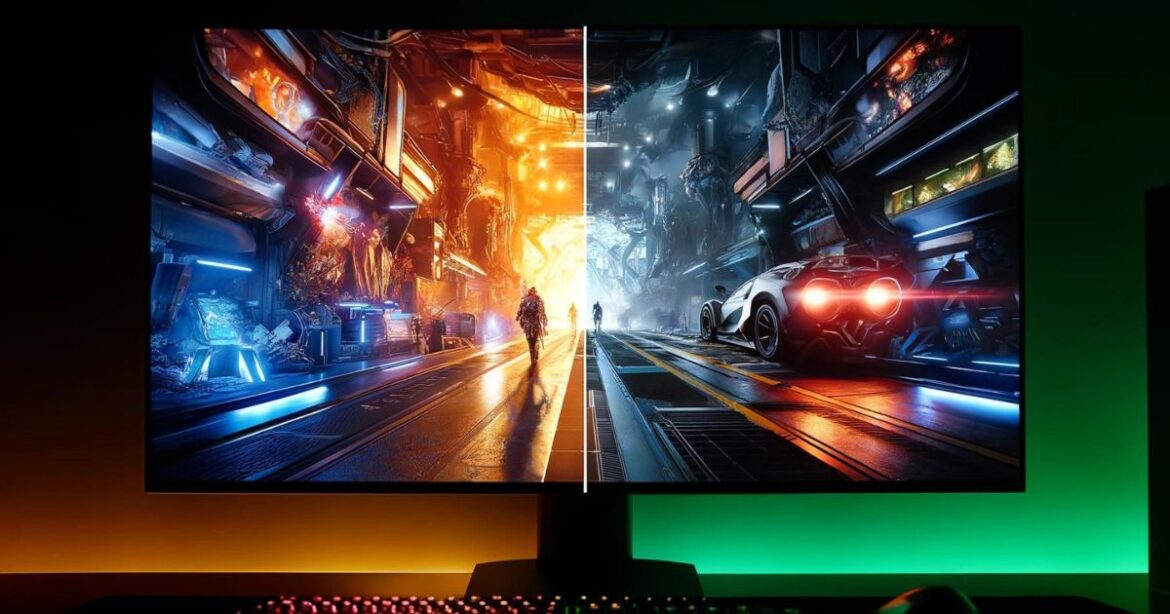You’re diving into the world of gaming and wondering if RTX (Ray Tracing Technology) is essential for your next adventure. This article explores the exciting features RTX brings to the table, like lifelike reflections and dynamic lighting, while also weighing its importance against other gaming necessities. So, whether you’re a seasoned gamer or just getting started, this piece will help you decide if RTX is worth the investment for your unique gaming setup.
Have you ever found yourself wondering if spending extra on an RTX graphics card is worth it for your gaming experience? Especially with all the buzzwords flying around about ray tracing and AI enhancements, it’s easy to feel left behind in the ever-evolving world of gaming technology. Well, you’re in the right place! Let’s dive into whether RTX is a must-have for gaming or just a luxury.
What is RTX?
RTX stands for Ray Tracing Texel eXtreme, and it’s NVIDIA’s series of graphics processing units (GPUs) that support real-time ray tracing. Essentially, ray tracing is a rendering technique that simulates the way light interacts with objects, creating incredibly realistic graphics.
Ray Tracing Explained
Ray tracing mathematically models how light travels and interacts with surfaces, producing reflections, refractions, and shadows that mimic real-world behaviour. Imagine you’re playing a game where every reflection on a glass surface or a water puddle looks exactly like it would in real life. That’s the magic of ray tracing.
Difference Between RTX and GTX
While both RTX and GTX are NVIDIA’s GPU series, RTX focuses significantly on real-time ray tracing and AI-driven enhancements. Unlike GTX, RTX cards come with RT cores (for ray tracing) and Tensor cores (for AI workloads). Here’s a quick comparison:
| Feature | RTX Series | GTX Series |
|---|---|---|
| Ray Tracing | Real-time ray tracing | Limited or No Support |
| AI Enhancements | Tensor Cores for AI workloads | No Tensor Cores |
| Performance | Higher overall performance | Medium to high performance |
| Price Range | Mid to High | Low to High |
Performance Improvement
Adding an RTX card to your setup can drastically improve your gaming performance, not just in terms of graphical quality but also in how smoothly your games run.
Related:
Which is better NVIDIA GTX or RTX?
Frame Rates
Higher frame rates mean a smoother gaming experience. RTX cards generally offer higher frame rates compared to their GTX counterparts. For example, the RTX 3080 can provide significantly higher frames per second (FPS) in modern games compared to the GTX 1080.
Resolution and Textures
RTX cards also support higher resolutions and better textures, enhancing the visual fidelity of your games. Whether you’re gaming in 1080p, 1440p, or even 4K, an RTX card will likely handle it better.

The Impact of Ray Tracing
Ray tracing can elevate the visual experience of a game to a whole new level, making it almost cinematic.
Visual Realism
With ray tracing, you’ll notice more lifelike reflections, shadows, and lighting. Games like “Cyberpunk 2077” and “Control” have implemented ray tracing to create stunningly realistic environments that enhance immersion.
Examples of Games
Here are some popular games that utilize ray tracing:
| Game Title | Ray Tracing Features |
|---|---|
| Cyberpunk 2077 | Realistic reflections, shadows, and lighting |
| Control | Enhanced reflections and global illumination |
| Battlefield V | Improved shadow details and reflections |
| Minecraft RTX | Overhauled lighting and reflections |
AI Enhancements with RTX
One of the standout features of RTX cards is their AI capabilities, driven by Tensor cores.
DLSS (Deep Learning Super Sampling)
DLSS uses AI to upscale lower-resolution images to a higher resolution. This feature allows you to run games at lower resolutions internally for better performance while outputting higher-res visuals.
AI-Driven Features
Besides DLSS, RTX cards come with various other AI-driven features, such as NVIDIA Broadcast, which improves streaming quality by using AI to remove background noise and blur.

Is RTX Overkill?
Not everyone needs an RTX card to enjoy a good gaming experience. If you’re more into casual gaming or playing less demanding titles, a mid-range GTX card could suit you just fine.
Cost Consideration
RTX cards are generally more expensive than their GTX counterparts. If you’re on a budget, it may not be worth the extra cost if you’re not playing games that support ray tracing or don’t care much about having the highest graphical settings.
Gaming Needs
Consider what types of games you play. If you’re a fan of indie games or older titles, an RTX card may be overkill for your needs. Conversely, if you’re always playing the latest AAA titles, an RTX GPU will ensure you’re future-proofed.
Future-Proofing Your Setup
Investing in an RTX card means you’re better prepared for future game releases that will likely utilize ray tracing and AI technologies even more.
Longevity
RTX cards are designed to handle upcoming advancements in graphics and AI. By investing in an RTX card now, you extend the lifespan of your gaming setup, making it less likely you’ll need to upgrade shortly.
Upcoming Games
More and more upcoming game releases are expected to support ray tracing. Being ahead of the curve will allow you to experience these new titles in all their glory.
RTX for VR Gaming
Virtual reality (VR) gaming is another area where RTX cards shine. High frame rates and low latency performance are crucial for a smooth VR experience, both of which RTX cards are designed to provide.
VR Ready
Most RTX cards come VR-ready, meaning they meet the minimum specifications required for VR gaming. This ensures a smoother, more immersive VR experience with less risk of motion sickness due to lag or frame drops.
Enhanced Immersion
The real-time ray tracing capabilities can make VR environments incredibly realistic, further enhancing your immersion. Imagine exploring a virtual world where light and shadows behave just as they do in real life—RTX makes that possible.
Benchmarks and Real-world Performance
Nothing speaks louder than real-world tests. Let’s look at some benchmark numbers showcasing the performance difference between RTX and non-RTX cards.
FPS Comparisons
Below is a table showing FPS comparisons in popular games between an RTX 3070 and a GTX 1070:
| Game Title | RTX 3070 (FPS) | GTX 1070 (FPS) |
|---|---|---|
| Cyberpunk 2077 | 70 | 40 |
| Control | 95 | 60 |
| Battlefield V | 144 | 90 |
| Minecraft RTX | 55 | 20 |
Power Consumption
While RTX cards offer higher performance, they also consume more power. It’s crucial to ensure your power supply unit (PSU) can handle the extra load.
Heat Output
Higher performance generally means more heat. Make sure your PC case has adequate cooling solutions to manage the additional heat generated by an RTX card.
Common Myths About RTX
Several misconceptions about RTX often leave potential buyers confused. Let’s debunk some of these myths.
RTX Only Affects Visuals
While RTX primarily enhances visual elements like lighting and reflections, features like DLSS can also boost performance, making your games run smoother.
RTX Requires Special Monitors
You don’t need a special monitor to enjoy the benefits of an RTX card. Any monitor will display the enhanced visuals and higher frame rates that RTX provides.
Only High-End Gamers Need RTX
RTX cards come in various models targeting different performance and budget levels. Whether you’re a casual gamer or a hardcore enthusiast, there’s likely an RTX card that fits your needs.
Conclusion: Is RTX Necessary for Gaming?
So, is RTX necessary for gaming? The answer depends on what you prioritize in your gaming experience.
For Hardcore Gamers
If you crave the highest graphical settings, realistic visuals, and future-proofing your setup, then investing in an RTX card is worth it. You’ll experience games to their fullest potential with lifelike lighting, shadows, and reflections.
For Casual Gamers
If you enjoy less demanding games and don’t prioritize the highest graphical settings, a GTX card might be sufficient. You’ll still have a great gaming experience without the added cost.
Final Thoughts
Ultimately, the decision lies in evaluating your specific gaming needs and budget. RTX offers cutting-edge technology, but it’s not a requirement for enjoying video games. However, if you decide to leap, the jaw-dropping graphics and smooth performance are certainly worth it.
So, what’s your next move? Are you ready to jump into the world of RTX, or do you think a GTX card will meet your gaming needs? The choice is yours!
